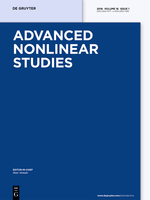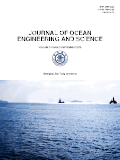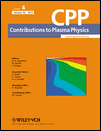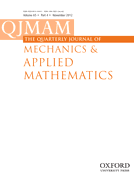
WAVE MOTION
Scope & Guideline
Illuminating the Interplay of Waves Across Sciences
Introduction
Aims and Scopes
- Wave Dynamics and Propagation:
Research focuses on the fundamental principles governing wave propagation in different media, including solids, fluids, and complex materials. - Nonlinear Wave Phenomena:
Exploration of nonlinear effects in wave dynamics, including solitons, rogue waves, and modulation instability. - Mathematical Modeling and Numerical Simulations:
Development and application of advanced mathematical models and numerical techniques to solve complex wave equations and analyze wave behavior. - Experimental Studies and Applications:
Investigations of wave phenomena through experimental setups, with practical applications in engineering, environmental science, and materials technology. - Acoustic and Electromagnetic Waves:
Studies related to the propagation and interaction of acoustic and electromagnetic waves, including metamaterials and waveguides. - Multi-Scale and Multi-Physics Approaches:
Integration of different physical principles and scales to understand wave phenomena, particularly in complex systems.
Trending and Emerging
- Nonlinear and Solitary Waves:
A significant increase in research on nonlinear wave solutions, including solitons and rogue waves, highlights the growing interest in complex wave interactions and their implications. - Machine Learning and Data-Driven Approaches:
The application of machine learning techniques for analyzing wave phenomena and optimizing wave propagation models is gaining traction, indicating a shift towards data-driven methodologies. - Metamaterials and Wave Manipulation:
Research on acoustic and electromagnetic metamaterials, focused on manipulating wave properties for various applications, is rapidly expanding, showcasing innovative engineering solutions. - Interfacial and Complex Fluid Waves:
Emerging studies on interfacial wave phenomena in complex fluid systems reflect a growing interest in understanding interactions in multi-phase and multi-component environments. - High-Frequency and Ultrasonic Waves:
There is a marked increase in studies related to high-frequency and ultrasonic wave applications, particularly in medical imaging and non-destructive testing. - Environmental and Ocean Wave Studies:
Research focusing on waves in environmental contexts, including ocean wave dynamics and their interactions with climate factors, is becoming increasingly prominent.
Declining or Waning
- Basic Linear Wave Theory:
There has been a noticeable decrease in the publication of papers focused solely on basic linear wave theory, as researchers increasingly explore more complex nonlinear and multi-dimensional wave phenomena. - Classical Fluid Dynamics:
The focus on classical fluid dynamics, particularly in the absence of nonlinear or complex interactions, appears to be waning as interest shifts toward more sophisticated models that incorporate nonlinear effects. - Single-Material Studies:
Research centered on wave behavior in single, homogeneous materials is less frequently published, with a growing emphasis on heterogeneous and composite materials. - Static Wave Solutions:
There is a decreasing trend in studies dealing with static or equilibrium wave solutions, with more attention being given to dynamic and time-dependent wave interactions.
Similar Journals

Physics of Wave Phenomena
Bridging Theory and Experiment in Wave ResearchPhysics of Wave Phenomena is an esteemed journal published by PLEIADES PUBLISHING INC, dedicated to advancing the understanding and research of wave-related phenomena across various physical contexts. Established in 2009, it has forged a reputation within the realm of Physics and Astronomy, most recently ranking in the Q3 category according to Scimago's metrics, reflecting its commitment to quality and relevance within the global scientific community. The journal's systematic exploration of wave dynamics, propagation, and interactions provides a vital platform for scholars, mathematicians, and practitioners seeking to disseminate their findings and engage with cutting-edge advancements in the field. With an evolving scope that embraces both theoretical and experimental studies, Physics of Wave Phenomena effectively serves as an essential resource for knowledge exchange, ensuring accessibility to the latest research trends, despite not currently adopting an open-access model. Indispensable to researchers and students alike, this journal plays a pivotal role in enriching the academic discourse within physics and related interdisciplinary fields.

ADVANCED NONLINEAR STUDIES
Exploring the Boundaries of Nonlinear PhenomenaADVANCED NONLINEAR STUDIES is a premier academic journal dedicated to the exploration of nonlinear phenomena across various scientific disciplines, particularly within the fields of mathematics and statistical physics. Published by De Gruyter Poland Sp. z o.o., this journal has established itself as a significant resource for researchers and practitioners alike since its inception in 2001. With an impressive Q1 ranking in both mathematics and statistical/nonlinear physics, it remains at the forefront of innovative research, providing open access to its content since 2022, thus ensuring a wide dissemination of groundbreaking findings. In the latest Scopus rankings, it boasts excellent standing, placing it in the top 16% for general mathematics and in the upper tier for statistical and nonlinear physics. The journal aims to foster scientific discourse and collaboration, making it an essential platform for advancing knowledge and understanding in nonlinear studies. Located in Warsaw, Poland, ADVANCED NONLINEAR STUDIES continues to attract contributions from a global network of scholars, making it a vital hub for contemporary research in this dynamic field.

Acoustics
Transforming Noise into Knowledge: A Hub for Acoustic InsightsAcoustics is a dynamic, peer-reviewed open access journal published by MDPI, dedicated to advancing the field of acoustics since its inception in 2019. With an E-ISSN of 2624-599X, this journal serves as a pivotal platform for researchers, professionals, and students engaged in the study of sound, its generation, transmission, and reception, as well as its applications across various domains, such as engineering, environmental science, and health. Based in Switzerland, Acoustics has quickly established its reputation, achieving a commendable Q2 ranking in the Acoustics and Ultrasonics category, as well as a noteworthy 16th position out of 44 in Scopus ranking, placing it in the 64th percentile among its peers. The journal aims to provide a comprehensive understanding of acoustic phenomena through interdisciplinary collaborations and innovative research, while ensuring immediate and free access to all published articles. For those vested in the ever-evolving landscape of acoustics, this journal represents a crucial resource for the latest developments and findings in the field.

Advances in Mathematical Physics
Connecting Scholars through Pioneering ResearchAdvances in Mathematical Physics is a premier open-access journal published by HINDAWI LTD, dedicated to the dissemination of research in the fields of applied mathematics and physics. With its ISSN 1687-9120 and E-ISSN 1687-9139, this journal has been a vital platform for innovative studies since its inception in 2009, fostering a collaborative environment for researchers and professionals alike. The journal features a wide range of topics, including but not limited to mathematical models, computational physics, and interdisciplinary applications, thus attracting a diverse readership. Ranked in the Q3 quartile for both Applied Mathematics and Physics and Astronomy, it serves as a significant resource for academics looking to explore cutting-edge developments and theoretical advancements. With an emphasis on open accessibility, Advances in Mathematical Physics ensures that research findings are readily available to the global academic community, leveling the playing field for emerging scholars and seasoned researchers. By consistently showcasing high-quality manuscripts, the journal contributes substantially to the fields of mathematics and physics, encouraging scholarly dialogue and advancing knowledge across a myriad of applications.

Kinematics and Physics of Celestial Bodies
Advancing Knowledge in Astronomical PhysicsKinematics and Physics of Celestial Bodies is a prominent journal published by PLEIADES PUBLISHING INC, dedicated to the exploration and understanding of celestial mechanics and the physical properties of astronomical bodies. With an ISSN of 0884-5913 and an E-ISSN of 1934-8401, this journal has established itself as a resource for researchers in the fields of astronomy, astrophysics, and space science since its inception in 2009. The journal is indexed in Scopus, where it currently ranks in the fourth quartile for both Astronomy and Astrophysics and Space and Planetary Science, making it a valuable platform for scholarly discourse despite its ranking. Its scope encompasses a range of topics related to the kinematics and physical characteristics of celestial objects, aiming to facilitate a better understanding of their dynamics and interactions within the universe. Although it does not operate under an open access model, the journal provides essential insights and findings, catering to the academic needs of researchers, professionals, and students engaged in the study of the cosmos. The journal's commitment to advancing knowledge in the various aspects of celestial physics ultimately contributes to the broader scientific community's endeavors.

Journal of Ocean Engineering and Science
Pioneering interdisciplinary approaches to ocean challenges.The Journal of Ocean Engineering and Science, published by Elsevier, is a prominent academic journal dedicated to advancing the field of ocean engineering and environmental sciences. Since its inception as an Open Access journal in 2016, it has rapidly gained recognition, achieving significant impact factor ratings with notable placements in the prestigious Q1 category for Ocean Engineering and Oceanography, and Q2 for Environmental Engineering in 2023. With a remarkable ranking of #3 out of 105 in Ocean Engineering and #4 out of 145 in Oceanography according to Scopus, the journal plays a critical role in disseminating cutting-edge research and innovative solutions addressing complex challenges faced by marine environments. Operating from Amsterdam, Netherlands, the Journal of Ocean Engineering and Science invites contributions from researchers, professionals, and students worldwide, emphasizing the importance of interdisciplinary approaches in achieving sustainable maritime practices.

APPLIED MATHEMATICS AND MECHANICS-ENGLISH EDITION
Bridging Theory and Practice in Engineering ExcellenceApplied Mathematics and Mechanics - English Edition is a prestigious journal published by Shanghai University, focusing on the interdisciplinary applications of mathematics and mechanics across various scientific and engineering domains. With an ISSN of 0253-4827 and an E-ISSN of 1573-2754, this journal has established itself as a vital resource since its inception in 1980, extending its coverage well into 2024. The journal boasts impressive Scopus rankings—placing it in the top 10% of the Applied Mathematics category and the top 20% in Mechanical Engineering and Mechanics of Materials—reflecting its significant impact and contribution to research. Currently categorized in the Q2 and Q1 quartiles, it caters to a diverse audience that includes researchers, professionals, and students seeking to explore cutting-edge developments and innovative methodologies in the field. Although the journal is not open access, it remains committed to disseminating high-quality research that addresses contemporary challenges in applied mathematics and mechanics, fostering a deeper understanding of their practical implications.

CONTRIBUTIONS TO PLASMA PHYSICS
Pioneering Research in the Realm of Plasma PhysicsCONTRIBUTIONS TO PLASMA PHYSICS is a distinguished journal dedicated to advancing the field of plasma physics, published by WILEY-V C H VERLAG GMBH. Since its inception in 1988, this journal has provided a platform for high-quality research, fostering collaboration and dissemination of knowledge in the condensed matter physics domain. With its current ranking of Q3 in the 2023 assessments, the journal is recognized for its contributions to the discipline, as indicated by its position in the Scopus rankings (Rank #252/434) and 42nd percentile within its category. Researchers and professionals engaged in plasma physics are encouraged to submit their work, as the journal aims to publish innovative studies that push the boundaries of current understanding and application in plasma phenomena. While currently not offering open access, the journal remains a vital resource for insights into the complexities and advancements in plasma research, operating from its base in Germany.

QUARTERLY JOURNAL OF MECHANICS AND APPLIED MATHEMATICS
Elevating Understanding in Mechanics and Condensed Matter.Quarterly Journal of Mechanics and Applied Mathematics, published by Oxford University Press, stands as a pivotal platform in the realms of applied mathematics, mechanical engineering, and condensed matter physics. Established in 1948, this venerable journal has continuously contributed to advancements in the understanding of complex mechanical phenomena through rigorous research and scholarly articles. With its Q3 status across multiple categories—applied mathematics, condensed matter physics, mechanical engineering, and mechanics of materials—it serves as a significant resource for both emerging and established researchers. While the journal is not open access, it is highly regarded for its selective publication process, ensuring that only high-quality, original research is disseminated. The impact factor reflects its critical role within the academic community, making it an essential read for scholars, professionals, and students aiming to stay at the forefront of developments in mechanics and applied mathematics.

Radiophysics and Quantum Electronics
Unveiling the Mysteries of the Quantum UniverseRadiophysics and Quantum Electronics is a leading scholarly journal published by SPRINGER, dedicated to advancing knowledge in the fields of radiophysics and quantum electronics. With a rich publication history dating back to 1967 and covering anticipated insights up to 2024, the journal serves as a crucial resource for researchers engaged in the exploration of areas such as Astronomy and Astrophysics, Electrical and Electronic Engineering, and Nuclear and High Energy Physics. Although it is classified in lower quartiles in several categories, its ongoing commitment to quality research and critical advancements adds invaluable knowledge to the scientific community. The journal does not currently offer open access options, allowing for traditional publication standards that uphold rigor and academic integrity. Researchers, professionals, and students alike can benefit from the comprehensive articles and studies published within its pages, making Radiophysics and Quantum Electronics an essential addition to any academic library focused on the nuances of modern physics and engineering.